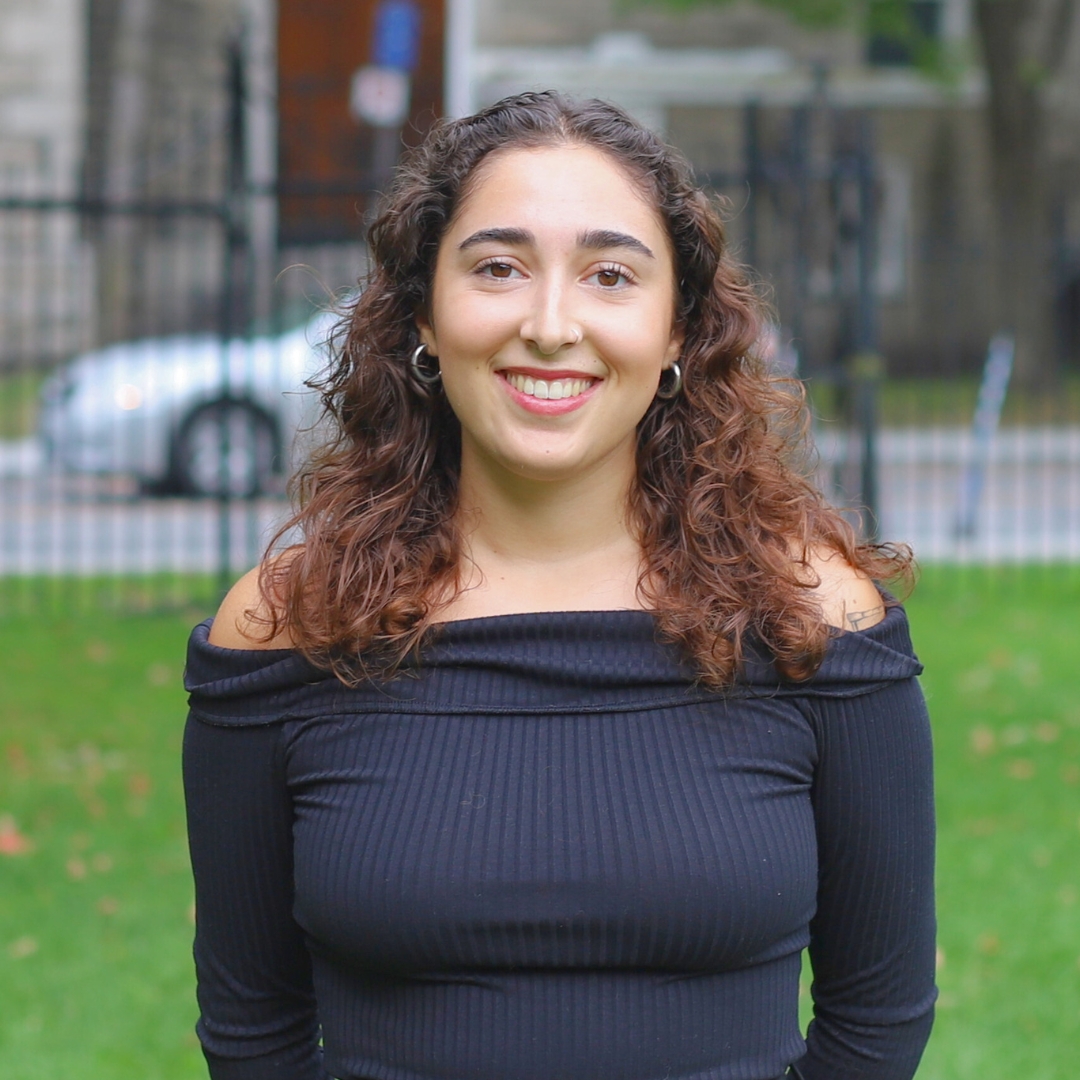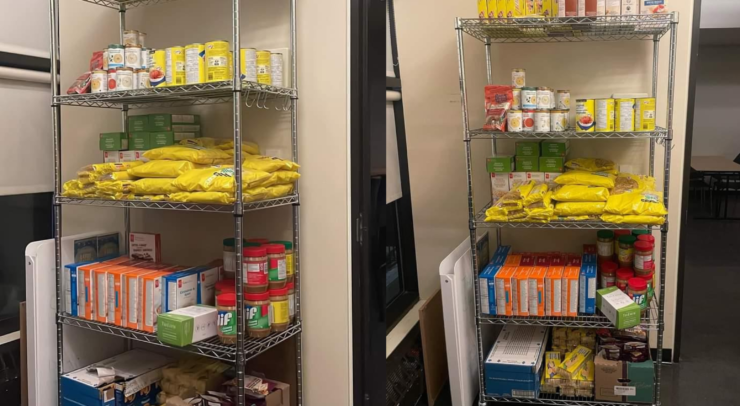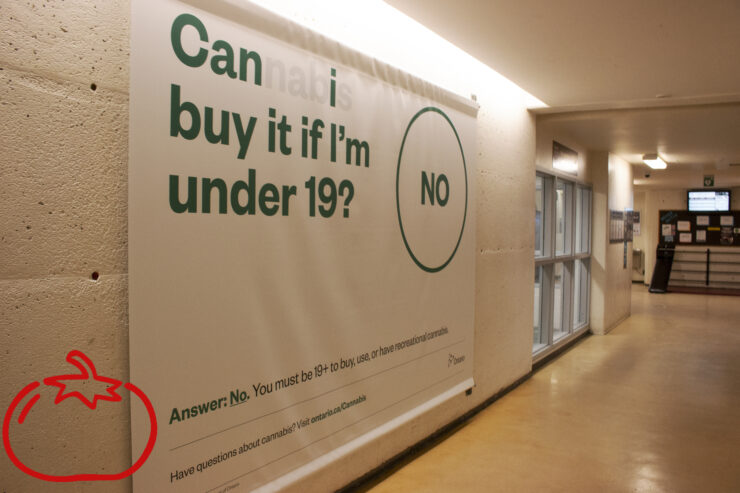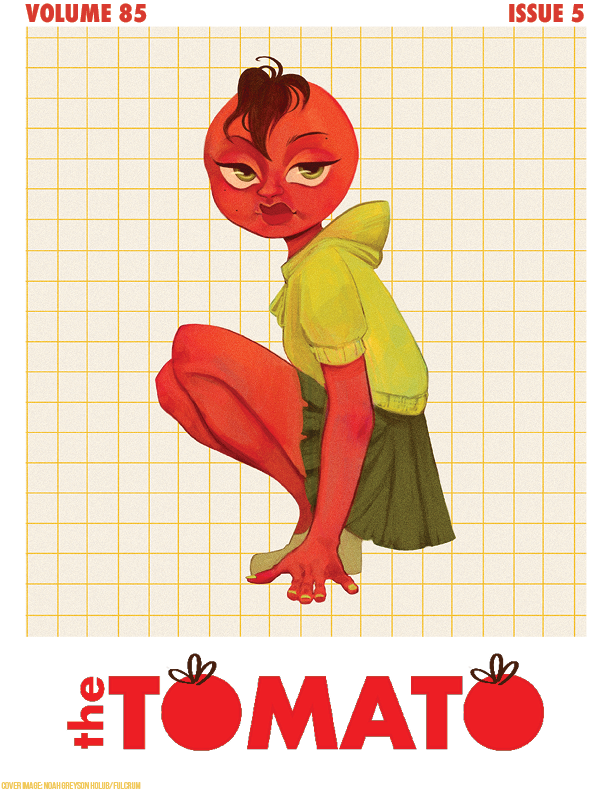A look back in the Fulcrum archives at student activism
Raising your hand in class should only be the beginning of making your voice heard. University provides many opportunities to develop your skills in activism, and speaking out about issues you care about. Over time, campuses have been places rich with passionate students advocating for change.
Through history, students have often contributed to important movements such as anti-apartheid protests, and more recently global climate strikes, or the Black Lives Matter movement.
In the summer of 2024, the Fulcrum reported on the encampment on Tabaret Lawn. The encampment was established in response to administrative silence to demands for the disclosure, divestment, adoption of anti-Palestinian racism definition and breaking off academic relationships with Zionist institutions.
After the dissolution of the ten-week long encampment on July 9, students are left wondering how to continue effective advocacy for a Free Palestine. Or, students may wonder if their voices even matter.
Luckily, history can serve as an excellent teacher if examined closely. Here is a look back in the Fulcrum archives at student activism, from the 1960s to 2024 encampment.
1963: Anti-apartheid protests

Apartheid, a system of racial segregation enforced in South Africa from 1948 to 1990, was characterized by the denial of basic rights to non-white peoples.
The Anti-Apartheid Movement spanning most of the 20th century was a world-wide effort to dismantle this illegitimate, racist, and abusive government in South Africa.
In the mid-1980s, students in North America mobilized to hold powerful institutions accountable. More specifically, pressuring universities to share diverse shares in companies that did business in South Africa. Sound familiar?
The Boycott Divestment Sanctions movement was inspired by other struggles for liberation. As students continue for the U of O to divest from companies complicit in the ongoing genocide perpetrated by the illegitimate state of Israel, BDS remains more relevant than ever.
U of T Professor Daniel Manulak describes, “from genocide in Darfur to fossil fuels to the war in Gaza, students have explicitly invoked the traditions, symbols, and lessons of the fight against South African apartheid. Consequently, it is worth revisiting the evolution of this movement on college campuses.”
The movement eventually led to South Africa’s first democratic elections in 1994, which saw Nelson Mandela elected as President. Persistence in student movements can cause change.
1978: Iranian students protest
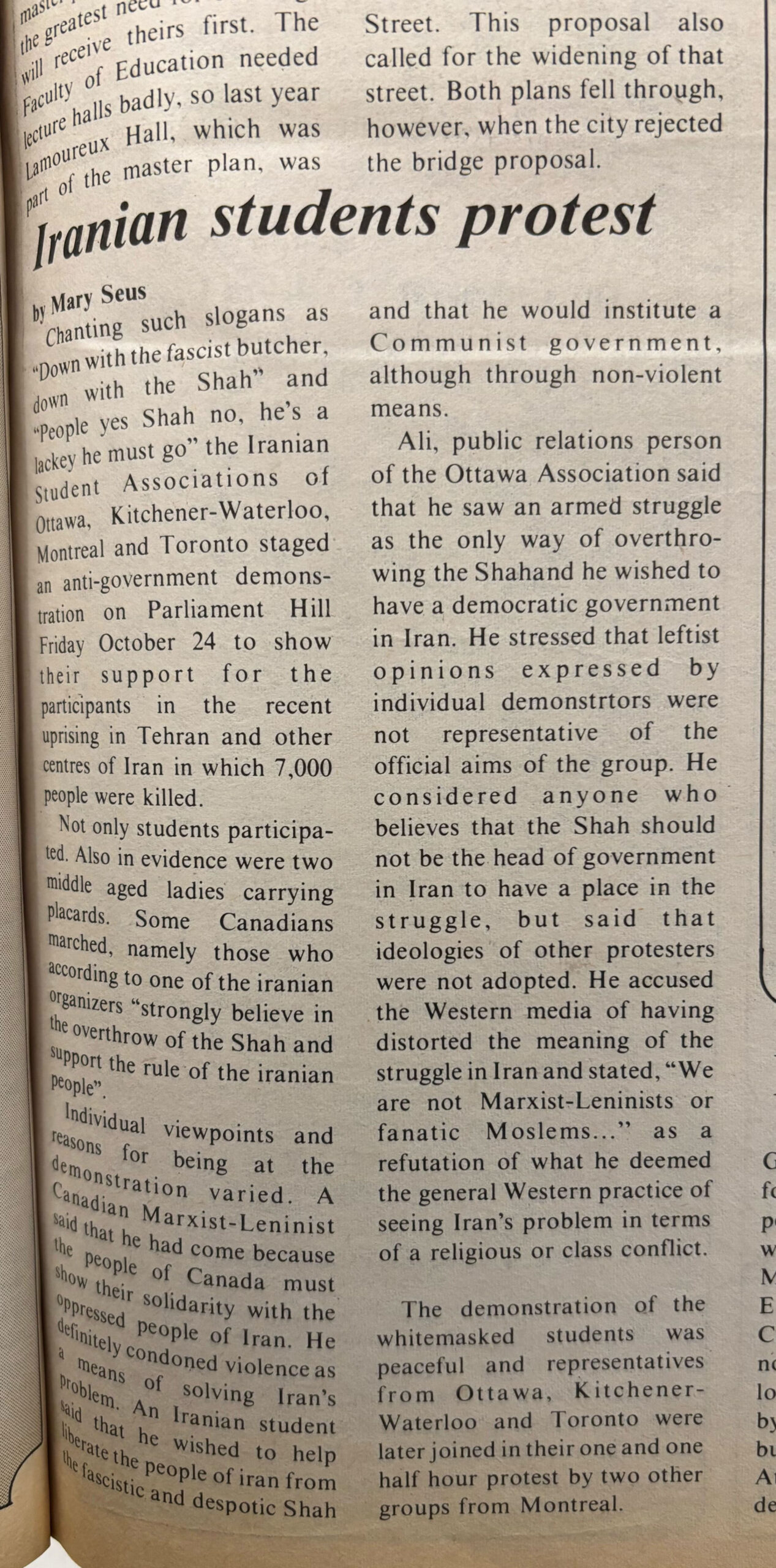
In October of 1978, students in Ottawa organized and demonstrated on Parliament Hill in support of the Iranian Revolution. This was part of a broader wave of international student activism, as Iranian students and their allies protested in cities around the world. Many of these demonstrations were led by members of the Confederation of Iranian Students (CIS), a transnational student organization that had been vocal against the Pahlavi regime for years.
The Iranian Revolution, as it is now known, began as popular uprisings in Tehran and other city centres during 1978–79 that resulted in the toppling of the monarchy on February 11, 1979. Initially, civil society organized, demanding political freedoms and an end to state repression.
The protests leading up to the revolution were shaped by decades of student activism both inside Iran and abroad. Iranian student groups had been demonstrating against the Shah since the 1960s, often facing crackdowns by SAVAK, the Shah’s secret police. By the late 1970s, these movements had gained momentum as growing economic struggles, political repression, and the influence of anti-imperialist ideologies mobilized students globally. Ultimately, the revolution led to the establishment of an Islamic republic.
Protesters wishing for a democratic government in Iran faced similar challenges contemporary protesters do. In the article below, the alignment of ‘Marxist-Leninist’ groups with the movement distracted the Western media from the true goal of the movement – freedom for the people of Iran.
2016: Kinder Morgan pipeline protest
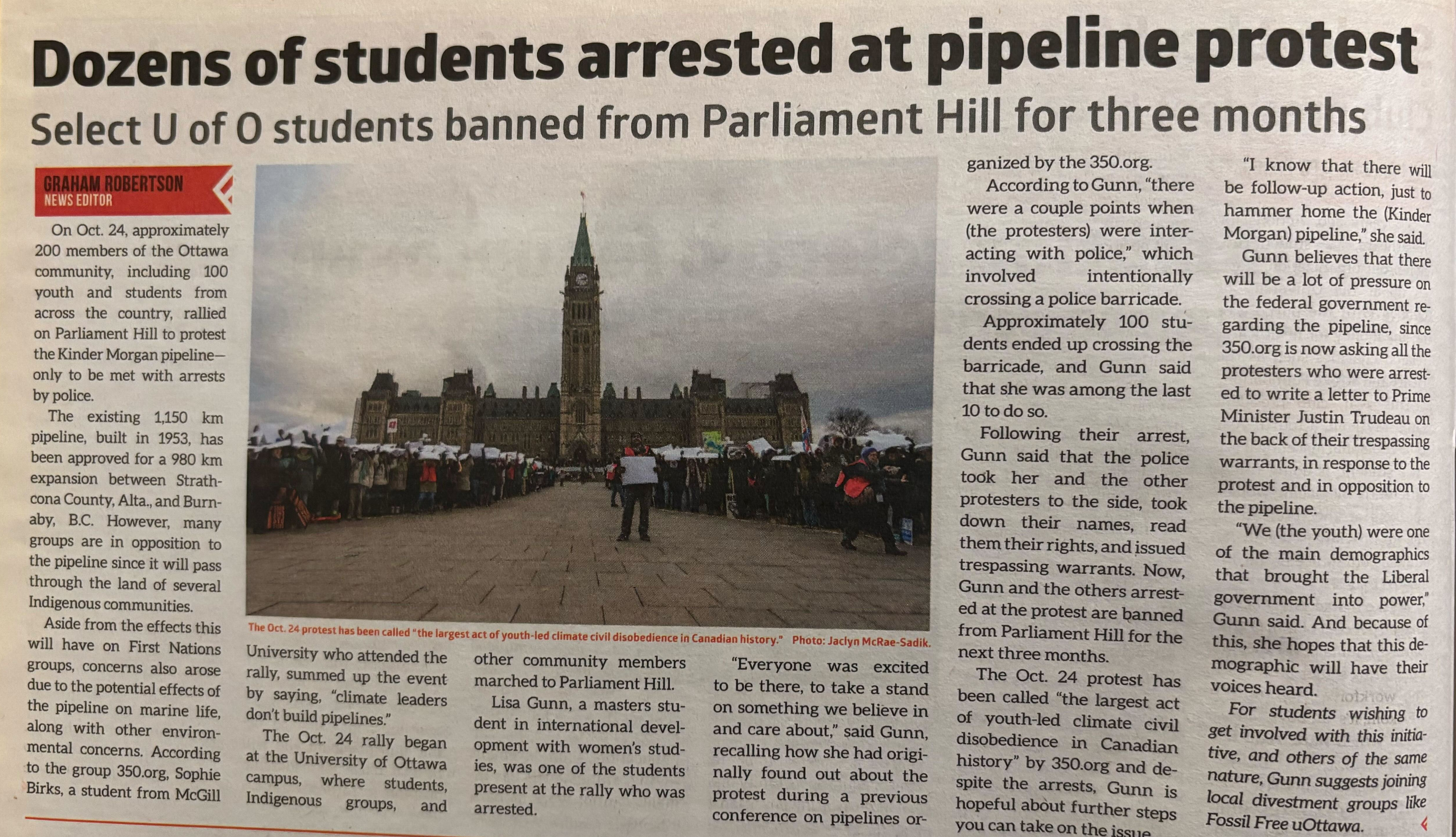
In October of 2016, several U of O students were arrested for protesting against the Kinder Morgan Pipeline on Parliament Hill. Students still face similar challenges and continue to oppose climate colonialism and corporate greed perpetrated by the Canadian government.
Themes of divestment are still a crucial part of student life on the U of O campus. The article cited local divestment groups such as ‘Fossil Free uOttawa’. Presently, similar missions are still being pursued by Climate Justice Climatique UO.
Students in the article cited they were using their voices to hold the government accountable. As we enter a tumultuous political climate, with provincial elections looming and U.S. tariffs incoming, students should consider what issues are important to them and register to vote accordingly, in addition to making their voices heard in other spheres such as community organizing or protests.
2020: Anti-Black racism sit-in
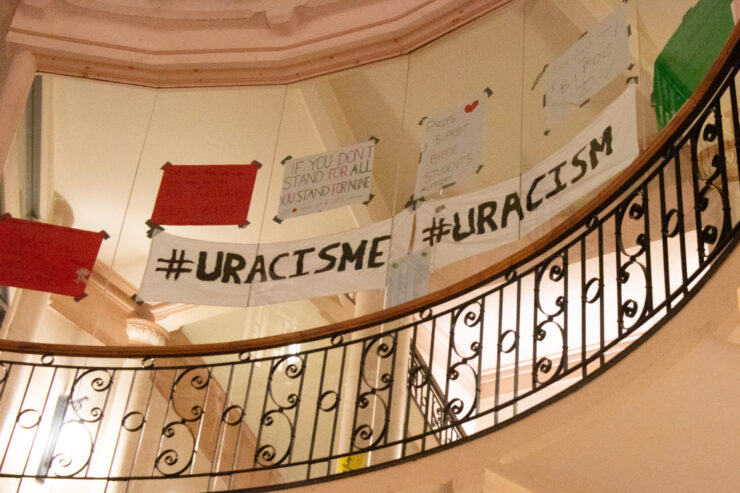
The Fulcrum spoke to Jason Seguya, the former UOSU student life commissioner and equity commissioner from 2019-2020 about the 2020 sit-in organized by various anti-Black racism groups on campus.
Seguya states “[The sit-in] included us at the University of Ottawa Students’ Union, OPIRG, and various student leaders. It also included the Black Student Leaders Association (BSLA) … a group of us who came together after frustrations of attempts of collaborating with the University of Ottawa to deal with some situations related to systemic racism on campus, to finally getting to a breaking point where we needed to push for some change. It has to be recognized that there was no one leader, but rather a collective effort.”
Similar to the encampment in 2024, Seguya described “It wasn’t just one action that came up at one point in time, but rather an escalation, after multiple attempts with the university to really collaborate on dealing with these issues as a collective.”
Black Student-Athletes Advocacy Council (BSAAC) was present to demonstrate their support for the sit-in and ensure the university recognized their values were aligned with those of the BSLA.
“It wasn’t just one action that came up at one point in time, but rather an escalation, after multiple attempts with the university to really collaborate on dealing with these issues as a collective,” said Seguya.
As a new council, the BSAAC had a pre-set meeting with the university, prior to the development of the sit-in.
“The BSAAC went on to have their meeting with University of Ottawa, and I kid you not, maybe after 20 to 30 minutes, after the scheduled time, the university tweeted out or communicated that they had successfully met the Black students on campus, and it was a productive conversation…I bring that up because … in the same way that we used press to get their attention, they allow themselves to use press and public communications to cause confusion. And it worked.”
Frustrations with the communication with the university are prevalent in current student movements, exemplified by the establishment of the encampment, discussed below.
Lastly, Seguya echoed “The thing that keeps you going is always going to be community… Don’t let the stress of organizing overpower the shared fact that we both have the same point of view. We both want to see the same outcome and cause it to diminish your own efforts. Work together.”
2024: Pro-Palestinian encampment on Tabaret Lawn
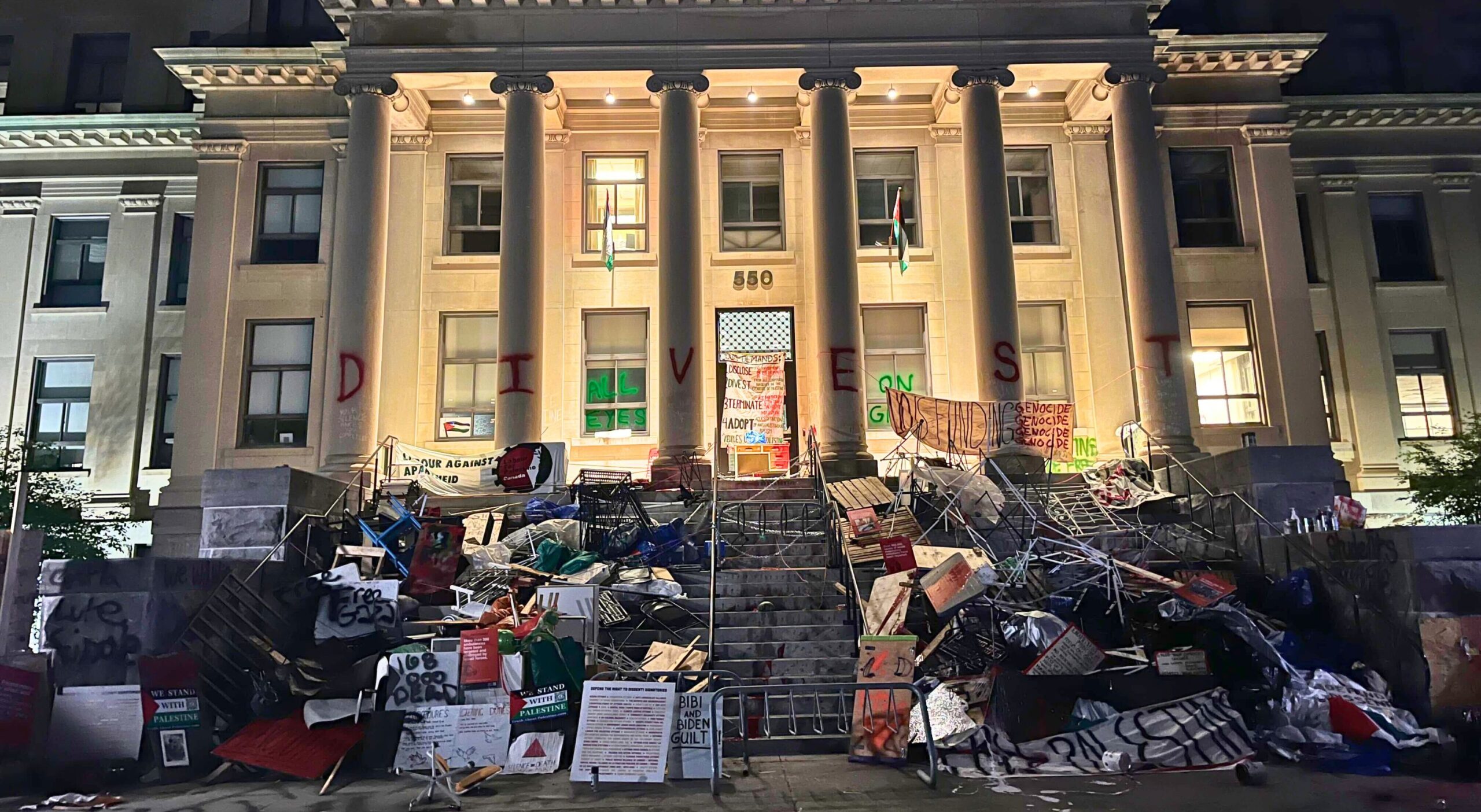
In 2024, students occupied Tabaret Lawn in an effort to get the university to divest from companies supporting Israel’s genocidal campaign in Palestine. The Fulcrum spoke with INSAF, a student-led educational and human rights advocacy group for the complete freedom of Palestine, discussing the dissolution of the encampment .
“One thing we really want to encourage individuals in whatever space they are occupying to bring Palestine into that space. Make it unavoidable,” said INSAF.
“The encampment was not the ‘be all end all’ of the movement … the mission of INSAF is to advocate, mobilize and educate for a free Palestine. Whether we get a divestment tomorrow, we would still have work to do. Palestine is still occupied. The work to be done is still plenty. I think that the encampment did help with momentum.”
Alex Stratas, advocacy commissioner for UOSU, told the Fulcrum, “How can we maintain momentum after the dissolution of the encampment? By the time the encampment closed down, it was a decided thing amongst all parties. We are not getting closer to our cause. We’re going to have to use other tools to facilitate what we need, which is divestment, complete divestment from the University of Ottawa to all genocidal companies, especially from their pension fund.”
INSAF reiterated, “One thing we really want to encourage individuals in whatever space they are occupying to bring Palestine into that space. Make it unavoidable.”
Stratas cited some ways forward for students who were involved in the encampment and looking for ways to progress the agenda of liberation.
“First of all, don’t forget your history. Read. If you don’t, you’re recycling the same things that they’ve already done, and you’re doing their mistakes. But if you’ve just read what they’ve done, you would learn from them.”
She describes some tangible tasks such as “Looking at what the political climate is today, and deciding, I can work with this. I can work with this, and I’ll build on this, and I’ll organize this, and I canvassing this. So that’s in terms of tips and tricks. Go canvas for anyone. Find something you like, if you want better transit in Ottawa. Go to Horizon Ottawa. Go canvas, see where that leads you.”
Going forward
The U of O has hosted passionate students advocating for change through the years.
The events listed above teach us that persistence pays off, community is power and student voices are effective tools in advocacy.
“The thing that keeps you going is always going to be community… Don’t let the stress of organizing overpower the shared fact that we both have the same point of view. We both want to see the same outcome and cause it to diminish your own efforts. Work together,” said Seguya.
While these movements have expanded one another, and even inspired each other, liberation still must be achieved. There is still work to be done, and we are still here.


